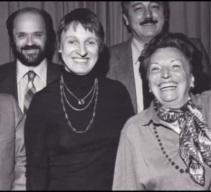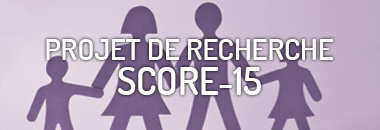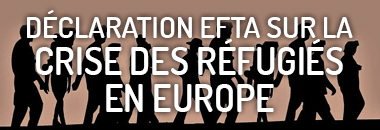EUROPEAN FAMILY THERAPY ASSOCIATION
CONNECTING FAMILY THERAPISTS AND TRAINERS
The Milan Team (when they were together till 1980)
The group was the first among family therapists to talk about marriages among family members

Umberta Telfener: In 1981 I went behind the one way mirror of the Milan Group. They were still together in via Leopardi in Milano on the verge of separating. I was with Lynn Hoffman and we stayed three intense days seeing them work. They seemed very intimate as a consequence of the time they had spent together on a common project: they seemed otherwise formally distant by character. They still had the session divided in five different moments and just two entered the sessions. I still remember the crystalline laugh of Selvini who commented in a sharp manner, finding terms of endearment ; the witty cynical propositions of Cecchin; the warm embrace of the whole system – us included – by Boscolo; the pragmatic and punctual suggested moves by Prata, she acted as the shepherd dog that reunites and keeps the memory together. They seemed to have each a positioning in their group and were respecting their roles very obediently, with no need of meta-communication among them. The rituality they showed was precise and reassuring. Selvini was usually the most talkative. How did they arrive at the final intervention? They talked together, explored hypotheses, made comments, till one of the proposals seemed right – it fitted the atmosphere – and was chosen as the final intervention. If they could not find an agreement the responsible of the case, usually the psychotherapist, had the last word. As in a brainstorming at last an idea was popping up and was the imbrication of all that had been said before, sort of at a different level of understanding.
Mauro Mariotti: The story begins way back in 1976. I attended a seminar held by Mara Palazzoli Selvini at the University of Bologna. We are a small group. Together with me Massimo Matteini, Laura Fruggeri and a few others. At the end of the seminar, Mara stops to talk to us. Her purse under her arm, she speaks fascinatingly about a clinical case. I remain spellbound listening to her for a few moments that, measured with the objectivity of the clock, turn out to be over an hour! She ends by saying that yes, if we want to learn, there are her two young colleagues who will start a family therapy training in Milan, via Leopardi, a few months later. The young colleagues are Boscolo and Cecchin. No, she will not teach, she wants to do research, but she will collaborate and we will be able to see their work taking place in the same Center (at that time it was like that).
That is how my adventure at the Centro Milanese di Terapia della Famiglia (CMTF) began in October 1976. First course held by Boscolo and Cecchin. In the classroom with me, Stefano Cirillo, Valeria Ugazio, Laura Fruggeri, Anna Maria Sorrentino, Fabio Bassoli and a few others.
I left the school in Milan in 1984 to found ISCRA, in Modena together with Fabio Bassoli, always under the supervision of Boscolo and Cecchin.
Massimo Schinco: At the end of the ‘70s I was a student at the University of Padua and the time finally came to choose the topic and supervisor of my degree dissertation. I was very passionate about the psychoanalyst W.R.Bion’s thinking. Bion was almost unknown in Italy at the time. In Padua was teaching Prof. Renata Gaddini, a profound expert on Bion. She was elderly, wise, brilliant and respectful of us students. Metaphorically speaking, I courted her intensely so to convince her to become my supervisor. After a tenacious courtship, she seemed almost on the verge of giving in… until one morning around seven, in a telephone conversation, she resolutely said “no” to me. Feeling like a rejected lover, I had to accept the situation and adapt to what awaited me, namely the ritual of the so-called « dissertation assignment ». In fact, this meant: taking a night train, arriving in Padua around four in the morning and queuing in front of the door of an office in Capitaniato square where the University was; it was January, and the temperature was several degrees below zero. Some students had already been camped there for several hours and one was taken away by an ambulance because he had gotten too cold. At nine o’clock the small office door opened and not long after I was received by an elderly, plump janitor, who wore a brimmed hat like bus drivers do. He addressed me in Venetian dialect: “Ciò caro (well, my dear), what would you like as a dissertation topic?” “Well, I would choose a topic with a clinical slant.” “Look here, there are these teachers who take care of handicapped students who have learning problems, what do you think?” “I really wouldn’t want to deal with learning problems.” “Ah, see, these people do behavioral therapy, would you like it?” “Um no, that’s not my mentality.” He went up and down the paper a little, scrolling through the list of professors and topics. He stopped his finger at the bottom of the list and all joyfully said to me: « Look, ghe xé (there is) this teacher, Maria Alberta Farini, who also works in family counseling, she’s really good, and she’s fond of those slightly strange things coming from America, you know, family therapy, communication…” While preparing for exams I had seen something about “pragmatic of human communication” applied to social psychiatry and was intrigued: it sounded to me as something new, gathering the best of Kurt Lewin’s intuitions while inserting them in a better, fascinating theoretical framework… Furthermore, an American friend, years before, while I was preparing to spend a few weeks in the United States, had told me: « Go there, and see what happens: it’s where things are happening. » And he was referring to Palo Alto, where then I visited the Stanford Medicine School. With that, I hadn’t thought about delving into that topic until then, but that morning in the janitor’s office I suddenly had one of those strange sensations you have when life is making you an invitation: and I said yes. This is how I prepared one of the very first dissertation on a systemic topic discussed in Italy. Professor Farini was part of the first group of students of Luigi Boscolo and Gianfranco Cecchin. While preparing my dissertation she made me read Paradox and Counterparadox. That was the reading that changed everything. I carefully keep that volume, all underlined and annotated, which I have reread and brought into classrooms, first as a student and then as a teacher, many and many times. It was that reading that convinced me to become a student of the Milan School.
After so many years, for me reading Paradox and Counterparadox is like listening to a Beatles record. Rigor and simplicity, seriousness and fun, evocation of a new world, together with the awareness that such a magical moment cannot last forever. A key concept in the book is that of “hybris”. For the four Authors, « hybris » is a characteristic of the rules of the family game; consequently, only the therapists’ counter-paradoxical maneuvers can stop the infinite repetition. However, so that the game does not start again, it is necessary to appeal to the responsibility of individuals, to their choice… This oscillation between the predominance of the rules of the game and the crucial importance of individual responsibility will play an important role in the subsequent works of the four Authors after the split of the group. Even today it appears to me like the mysterious entrance to a cave that speleologists have not managed to fully explore: it inspires fear but irresistibly attracts.



